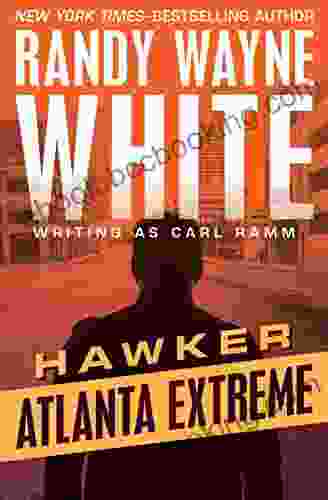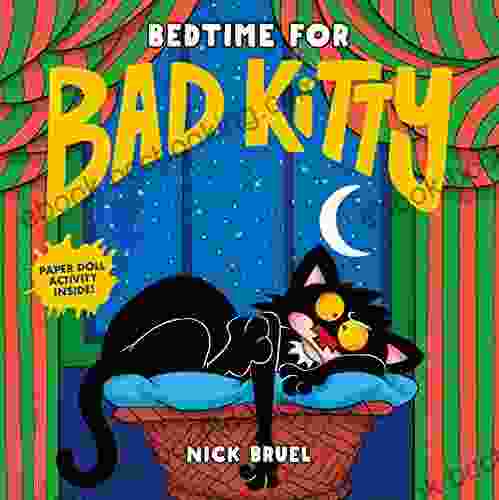How to Put on a Community Play: A Comprehensive Guide

Putting on a community play is a great way to bring people together and create a sense of community. It can also be a lot of fun! But if you've never done it before, it can be daunting to know where to start.
4.6 out of 5
| Language | : | English |
| File size | : | 26139 KB |
| Text-to-Speech | : | Enabled |
| Screen Reader | : | Supported |
| Enhanced typesetting | : | Enabled |
| Word Wise | : | Enabled |
| Print length | : | 217 pages |
That's where this guide comes in. We'll walk you through every step of the process, from choosing the right script to marketing your production.
Step 1: Choose the Right Script
The first step is to choose the right script. There are a few things to keep in mind when making your selection:
- The length of the play. Community plays are typically shorter than professional productions, so you'll want to choose a script that can be performed in two to three hours.
- The number of characters. The number of characters in your play will determine how many actors you'll need. It's important to choose a script that has a manageable number of characters, especially if you're working with a small group.
- The level of difficulty. The difficulty of the play will depend on the experience level of your actors. If you're working with a group of beginners, you'll want to choose a script that is relatively easy to learn.
- The theme of the play. The theme of the play is what it's about. You'll want to choose a script that has a theme that is relevant to your community.
Once you've considered all of these factors, you can start narrowing down your choices. There are many great resources available online that can help you find the perfect script for your community play.
Step 2: Find a Venue
The next step is to find a venue for your play. This could be a local theater, a community center, or even a school auditorium. When choosing a venue, it's important to consider the following:
- The size of the venue. The size of the venue will determine how many people you can accommodate. It's important to choose a venue that is large enough to fit your audience, but not so large that it feels empty.
- The cost of the venue. Venues can range in price, so it's important to budget for this expense.
- The availability of the venue. Make sure that the venue is available on the dates you need it.
Once you've found a venue, you can book it and start planning your production.
Step 3: Cast Your Actors
The next step is to cast your actors. This can be a challenging task, but it's also one of the most important. The right actors will bring your play to life and make it a success.
When casting your actors, it's important to keep the following in mind:
- The experience level of the actors. If you're working with a group of beginners, you'll want to choose actors who have some experience. However, don't be afraid to cast beginners if you think they have the potential.
- The personality of the actors. The actors you choose should have the right personality for the roles they're playing. It's important to find actors who are enthusiastic and passionate about the play.
- The availability of the actors. Make sure that the actors you choose are available for the entire rehearsal and performance schedule.
Once you've cast your actors, you can start rehearsing.
Step 4: Rehearse Your Play
Rehearsals are an essential part of the production process. They give your actors a chance to learn their lines, develop their characters, and work together as a team.
When rehearsing your play, it's important to keep the following in mind:
- The length of the rehearsals. Rehearsals should be long enough to give your actors time to learn their lines and develop their characters, but not so long that they get bored or burned out.
- The frequency of the rehearsals. The frequency of the rehearsals will depend on the length of your play and the availability of your actors. It's important to find a schedule that works for everyone.
- The focus of the rehearsals. The focus of the rehearsals should be on helping your actors learn their lines and develop their characters. However, you should also use rehearsals to work on the technical aspects of the production, such as the set, the lighting, and the sound.
Rehearsals are a lot of work, but they're also a lot of fun. By the end of the rehearsal process, you and your actors will have created a strong bond and a sense of camaraderie.
Step 5: Market Your Play
Once your play is ready to go, it's time to start marketing it. There are many different ways to market your play, including:
- Social media. Social media is a great way to reach a large audience. Create a Facebook page for your play and use it to share updates, photos, and videos. You can also use social media to run ads targeting people in your community.
- Email marketing. Email marketing is a great way to stay in touch with your audience and promote your play. Create an email list and use it to send out regular updates about your play. You can also use email marketing to sell tickets to your play.
- Print advertising. Print advertising can be a great way to reach people in your community who are not online. Take out ads in local newspapers and magazines. You can also post flyers around town.
- Public relations. Public relations can be a great way to get your play featured in the media. Contact local newspapers, magazines, and TV stations and let them know about your play. You can also invite them to attend a performance.
Marketing your play takes time and effort, but it's worth it. By promoting your play effectively, you can reach a large audience and sell out your performances.
Step 6: Stage Your Play
The final step is to stage your play. This involves putting up the set, lighting the play, and designing the sound. It's important to work with a qualified technical director to ensure that your play looks and sounds its best.
Staging your play can be a lot of work, but it's also a lot of fun. By working together, you and your team can create a beautiful and memorable production.
Putting on a community play is a lot of work, but it's also a lot of fun. By following these steps, you can produce
4.6 out of 5
| Language | : | English |
| File size | : | 26139 KB |
| Text-to-Speech | : | Enabled |
| Screen Reader | : | Supported |
| Enhanced typesetting | : | Enabled |
| Word Wise | : | Enabled |
| Print length | : | 217 pages |
Do you want to contribute by writing guest posts on this blog?
Please contact us and send us a resume of previous articles that you have written.
 Book
Book Novel
Novel Page
Page Chapter
Chapter Text
Text Story
Story Genre
Genre Reader
Reader Library
Library Paperback
Paperback E-book
E-book Magazine
Magazine Newspaper
Newspaper Paragraph
Paragraph Sentence
Sentence Bookmark
Bookmark Shelf
Shelf Glossary
Glossary Bibliography
Bibliography Foreword
Foreword Preface
Preface Synopsis
Synopsis Annotation
Annotation Footnote
Footnote Manuscript
Manuscript Scroll
Scroll Codex
Codex Tome
Tome Bestseller
Bestseller Classics
Classics Library card
Library card Narrative
Narrative Biography
Biography Autobiography
Autobiography Memoir
Memoir Reference
Reference Encyclopedia
Encyclopedia Robert A Day
Robert A Day Leslie R Schover
Leslie R Schover Peter Kurth
Peter Kurth Vincent Bevins
Vincent Bevins Susan Adams
Susan Adams Tony Vanderwarker
Tony Vanderwarker Miles J Anderson
Miles J Anderson Rob Kenner
Rob Kenner Mikhaela Ackerman
Mikhaela Ackerman Mia Collins Parker
Mia Collins Parker Sari Barel
Sari Barel Ladybird
Ladybird Lexi Sundell
Lexi Sundell Pat Dooley
Pat Dooley Luisa Weiss
Luisa Weiss Maria Goodavage
Maria Goodavage Kimberly Brooks
Kimberly Brooks Tylerann Townsend
Tylerann Townsend Matt Rendell
Matt Rendell Siddhartha Mukherjee
Siddhartha Mukherjee
Light bulbAdvertise smarter! Our strategic ad space ensures maximum exposure. Reserve your spot today!

 Chris Coleman"They Shall Not Pass:" A Riveting Memoir of Survival in the Trenches of World...
Chris Coleman"They Shall Not Pass:" A Riveting Memoir of Survival in the Trenches of World... Darren NelsonFollow ·7k
Darren NelsonFollow ·7k Javier BellFollow ·19.7k
Javier BellFollow ·19.7k Don ColemanFollow ·3k
Don ColemanFollow ·3k Stuart BlairFollow ·17.3k
Stuart BlairFollow ·17.3k Henry David ThoreauFollow ·14.3k
Henry David ThoreauFollow ·14.3k Jeremy CookFollow ·8.1k
Jeremy CookFollow ·8.1k Victor HugoFollow ·3.1k
Victor HugoFollow ·3.1k Chad PriceFollow ·2.9k
Chad PriceFollow ·2.9k

 Philip Bell
Philip BellPersonal History: From the Last Imperial Dynasty to the...
By Author Name A...

 Gustavo Cox
Gustavo CoxAlexander Csoma de Kőrös: The Father of Tibetology
Alexander...

 Harvey Bell
Harvey BellUnveiling the Titanicat: Dive into the True Stories...
A Literary Voyage into the...

 José Martí
José MartíUnveiling the Festive Flavors of Christmas: A Culinary...
As the crisp winter air fills with the...
4.6 out of 5
| Language | : | English |
| File size | : | 26139 KB |
| Text-to-Speech | : | Enabled |
| Screen Reader | : | Supported |
| Enhanced typesetting | : | Enabled |
| Word Wise | : | Enabled |
| Print length | : | 217 pages |














